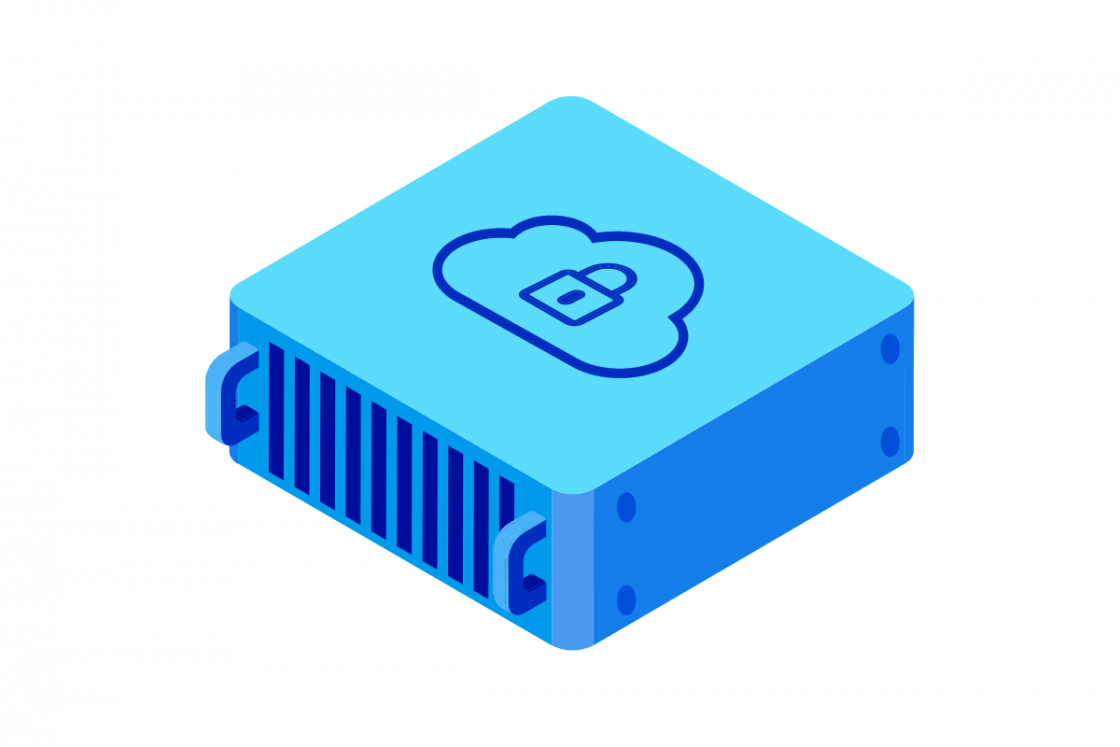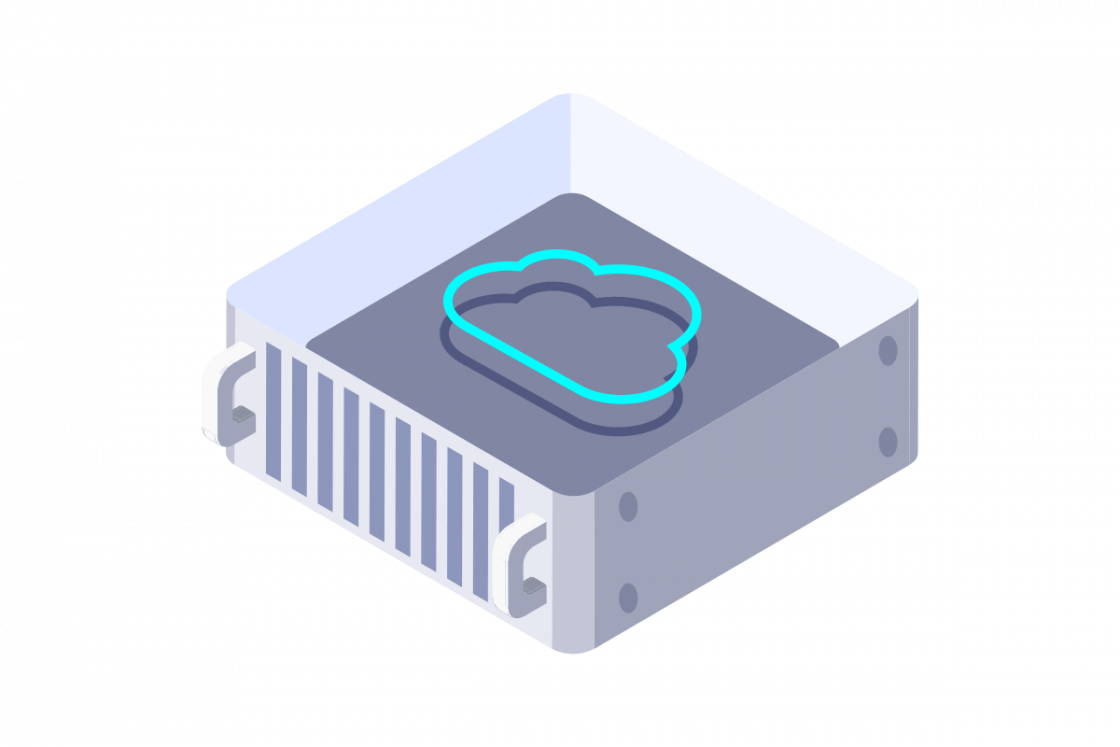What is Multi-Cloud Networking?
Multi-cloud networking refers to the practice of connecting and integrating different cloud services from multiple vendors into a single, unified network. Instead of relying on a single cloud vendor, businesses can leverage the strengths of various platforms, creating a flexible and robust IT infrastructure.

This approach allows organizations to seamlessly manage, control, and secure their applications and information across different cloud environments.
There is a difference between hybrid and multi-cloud solutions. Hybrid cloud solutions combine private and public clouds, for control over data and security. Multi-cloud uses several public cloud providers, providing flexibility, avoiding vendor lock-in, and allowing access to a wider range of services.
Why Multi-Cloud Networking is Essential for Modern Businesses
This method is becoming increasingly important for several reasons:
- Avoid vendor lock-in: Relying on a single cloud provider can limit flexibility and lead to dependency. Multi-cloud strategies mitigate this risk, allowing businesses to choose the best services and negotiate better pricing.
- Optimize performance: Different cloud providers excel in different areas. By distributing workloads across multiple clouds, businesses can optimize for speed, choosing the best platform for each specific application or task.
- Increase resilience: Multicloud networking enhances disaster recovery and business continuity. If one cloud provider experiences an outage, applications and data can be seamlessly shifted to another, minimizing downtime.
- Drive innovation: Access to a wider range of services and capabilities across different cloud platforms fosters innovation. Businesses can leverage cutting-edge technologies like AI/ML, IoT, and advanced analytics from various providers.
- Meet regulatory requirements: Some industries have specific data sovereignty, compliance and governance requirements. It allows businesses to store and process data in specific geographic locations to meet these needs.
By embracing multi-cloud networking, businesses can gain a competitive edge by increasing agility, optimizing costs, and unlocking new possibilities for growth and innovation.
Key Components of Multi-Cloud Networking
Multi-cloud networking relies on many components working together to create a cohesive and efficient system. These components include robust cloud connectivity and integration, effective net abstraction and orchestration, and comprehensive multi-cloud security and compliance measures.
Cloud Connectivity and Integration
The foundation of any multi cloud network. This involves establishing secure and reliable connections between cloud providers' environments.
This can be achieved through various technologies like virtual private networks (VPNs), dedicated interconnects, and software-defined networking (SDN). The goal is to ensure seamless communication and transfer between applications and services residing in different clouds.
Network Abstraction and Orchestration
Essential for managing the complexity of multi-cloud environments: by abstracting the underlying network infrastructure, organizations can create a unified view of their entire network, regardless of the underlying cloud providers.
This simplifies management and allows for centralized control over network policies, configurations, and resources. Orchestration tools automate tasks like provisioning network services, configuring cybersecurity policies, and monitoring speeds, further streamlining operations.
Security and Compliance
With data spread across several clouds, robust network security measures are crucial to protect sensitive information and ensure compliance with industry regulations.
This involves implementing consistent security policies across all cloud platforms, including access control, encryption, intrusion detection, and threat prevention. Centralized security management tools help monitor and enforce cybersecurity policies across the multi-cloud environment, ensuring protection and regulatory compliance.
How Multi-Cloud Networking Works
Multi-cloud involves a sophisticated interplay of technologies and strategies to connect, manage, and optimize communication across different cloud platforms. Here's a closer look at the key processes involved:
Connecting Multiple Cloud Providers
The first step in establishing a multi-cloud net is to connect the cloud environments. This can be achieved through various methods, each with its own advantages and trade-offs.
Virtual Private Networks (VPNs) create secure tunnels over the public internet to connect different cloud environments. This is a cost-effective option, but speeds can be affected by internet latency and congestion.
Alternatively, cloud providers offer dedicated connections that bypass the public internet, providing higher bandwidth and lower latency. This is ideal for performance-sensitive apps but can be more expensive.
Software-Defined Networking (SDN) uses software to control the network infrastructure, allowing for centralized management and automation. This provides flexibility and agility in managing connections across multiple clouds.
Data Flow and Traffic Management
Once the cloud presences are connected, efficient data flow and traffic management become crucial. This involves directing traffic across the multi-cloud network using appropriate routing protocols and policies. This ensures that data packets reach their intended destination efficiently.
Furthermore, implementing techniques like traffic shaping, prioritization, and caching can optimize network performance. This ensures that critical apps receive the necessary bandwidth and resources.
Network segmentation is another important aspect, dividing the network into smaller, isolated segments to improve cybersecurity and speed. This helps contain security threats and prevent performance issues from affecting the entire network. Effective data flow and traffic management ensure smooth communication and optimal speeds across the multi-cloud environment.
Load Balancing and Redundancy
Load balancing and redundancy are essential for ensuring high availability and resilience in a multicloud network. Load balancing involves distributing traffic across many cloud instances or even different cloud vendors.
This prevents overload on any single resource and ensures consistent application performance. Redundancy involves implementing failover mechanisms and replicating critical resources across different clouds.
Technologies for Multi-Cloud Networking
A range of technologies enable and enhance this technology, providing the necessary infrastructure, connectivity, cybersecurity, and management capabilities. Here are some of the key technologies involved:
- Software-Defined Networking (SDN): SDN allows administrators to programmatically manage net resources, automate tasks, and dynamically adjust network configurations across cloud environments. This provides flexibility, agility, and scalability in managing multi-cloud networks.
- Network Virtualization: Network virtualization technologies like Virtual Private Clouds (VPCs) and Virtual Private Networks (VPNs) are essential for creating isolated network segments and secure connections between different cloud environments.
- Infrastructure-as-Code (IaC): IaC tools automate the provisioning and management of network infrastructure, making it easier to deploy, configure, and scale across multiple cloud environments.
- Cloud Management Platforms (CMPs): CMPs provide a centralized platform for managing and monitoring multi-cloud environments. They offer tools for resource provisioning, cost optimization, security management, and speed monitoring across cloud providers.
- Security Information and Event Management (SIEM): SIEM tools collect and analyze cybersecurity logs from cloud environments, providing a unified view of cybersecurity events and threats.
Benefits of Multi-Cloud Networking
Enhanced Flexibility and Scalability
Multi-cloud provides unparalleled flexibility in choosing the best cloud for specific needs. Businesses can select different cloud providers based on their strengths in specific areas, such as compute, storage, or analytics.
It allows for a tailored IT infrastructure that aligns with specific application requirements and business objectives. Furthermore, multicloud environments offer greater scalability, allowing businesses to quickly adjust resources based on demand.
This agility enables them to respond to market changes, accommodate growth spurts, and adapt to evolving business needs without being constrained by the limitations of a single cloud provider.
Improved Reliability and Redundancy
By distributing apps across multiple cloud providers, businesses significantly enhance their resilience and minimize the risk of downtime. If one cloud provider experiences an outage or disruption, operations can seamlessly failover to another cloud, ensuring business continuity.
This redundancy also strengthens disaster recovery solutions, allowing for rapid restoration and minimal disruption in critical situations. It provides a safety net, protecting businesses from the potential pitfalls of relying on a single point of failure.
Optimized Performance and Cost Efficiency
It enables businesses to optimize performance by leveraging the strengths of cloud providers. They can choose the best platform for specific workloads, such as high-performance computing, analytics, or low-latency applications.
This strategic allocation of resources ensures optimal speeds and user experience. Additionally, multicloud environs can lead to cost savings by allowing businesses to take advantage of competitive pricing and avoid vendor lock-in. By leveraging different pricing models and negotiating with multiple providers, businesses can optimize their cloud expenditure and achieve cost efficiency.
Use Cases
Multi-cloud supports various applications. It enhances disaster recovery, reduces latency for geographically dispersed workforces, and leverages strengths of different cloud providers for data-intensive applications.
- Disaster recovery and business continuity: By replicating critical information and applications across multiple cloud vendors, companies can ensure minimal downtime and data loss in the event of a disaster, such as a natural calamity or a cyberattack.
- Geographically dispersed workforces: Strategically placing applications and data in cloud regions closer to users means latency can be minimized, resulting in faster response times and improved application performance.
- Data-intensive applications: Data-intensive applications, such as big data analytics, machine learning, and scientific computing, often require vast amounts of computing power and storage. It gives the flexibility to leverage cloud vendors’ strengths for specific tasks.
Overall, it allows for using the best-of-breed cloud services for their data-intensive applications, unlocking new possibilities for processing and analysis.

Challenges and Solutions in Multi-Cloud Networking
While this form of building networks offers significant advantages, it also presents unique challenges that organizations must address to ensure successful implementation and operation.
Companies should adopt a centralized cybersecurity management approach, using tools that provide a unified view of security across all cloud platforms. This allows for consistent policy enforcement, automated threat detection, and streamlined incident response.
Like it’s worth implementing a comprehensive compliance strategy that encompasses all cloud environments. This includes encryption, access control, audit trails, and regular security assessments. Utilizing cloud-based compliance monitoring tools can help automate compliance checks and ensure adherence to relevant regulations.

Best Practices for Multi-Cloud Networking Implementation
Successfully implementing and managing a multi-cloud net requires careful planning and adherence to best practices.
Architecture matters. Organizations should consider factors like whether to opt for a centralized architecture, where traffic is routed through a central hub, or a distributed architecture, which allows direct communication between clouds.
Evaluating connectivity options like VPNs, direct connects, and SD-WANs is also essential, considering factors like bandwidth needs, latency requirements, and budget.
Data encryption, both in transit and at rest, is also crucial to protect sensitive information from unauthorized access.
Using a centralized monitoring system provides visibility into network speeds, resource utilization, and cybersecurity events across all cloud environments. Implementing techniques like traffic shaping, caching, and load balancing solutions can optimize net performance and ensure application availability.

Discover Our Multi-Cloud Networking Solutions
OVHcloud Hybrid Multi Cloud provides businesses with a flexible and scalable way to manage their communications.
It allows you to connect their on-premises, private cloud, and public cloud environments, giving them the freedom to choose the best option for their needs.
With OVHcloud UC Hybrid Multi Cloud, businesses can benefit from the scalability and cost-effectiveness of the cloud, while still maintaining control over their data.